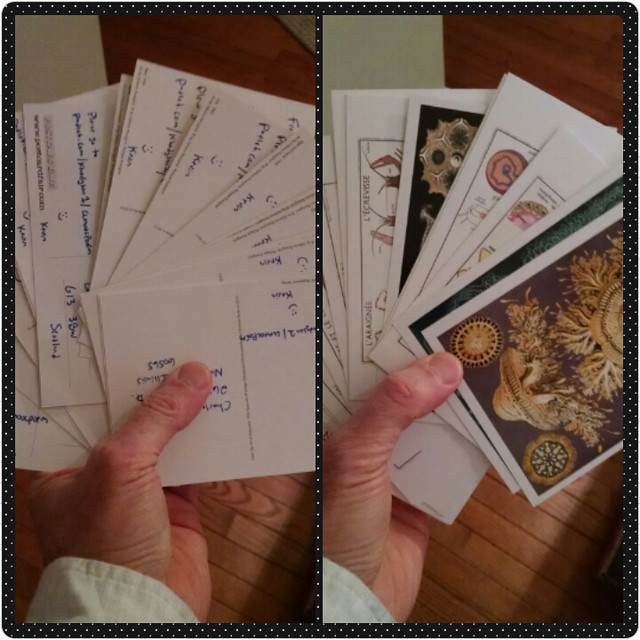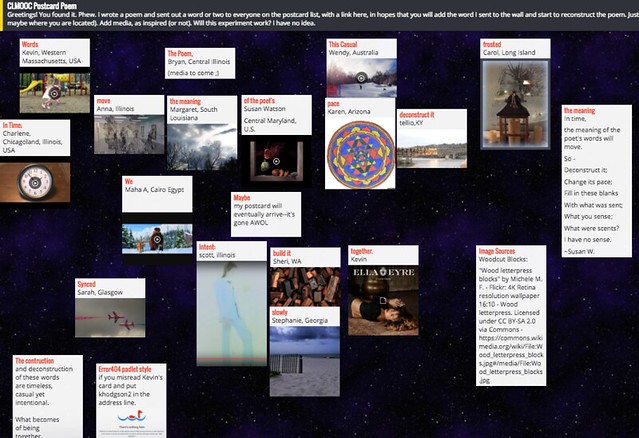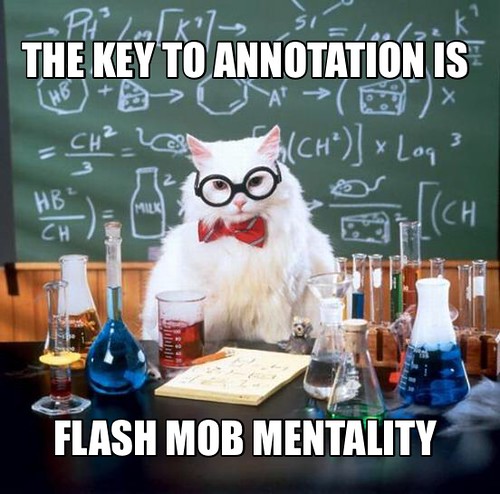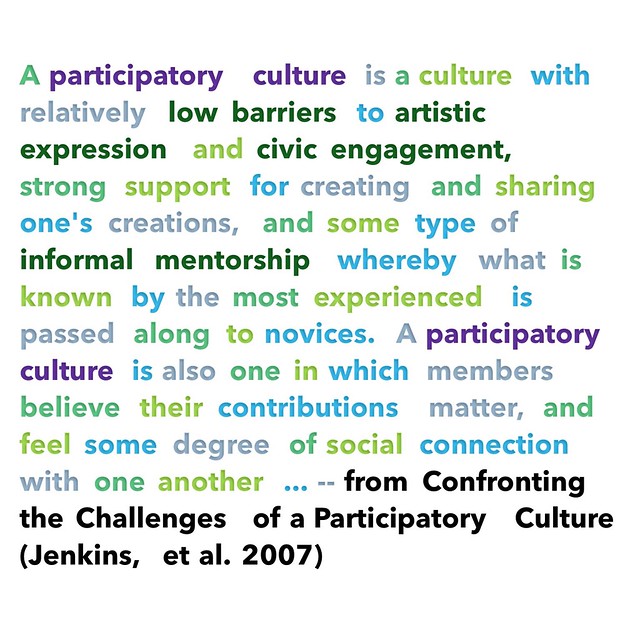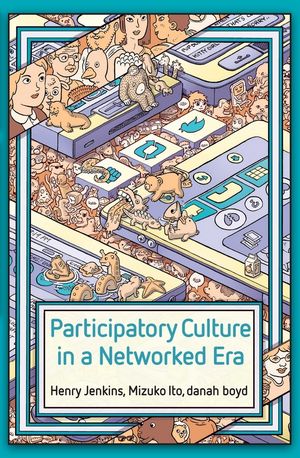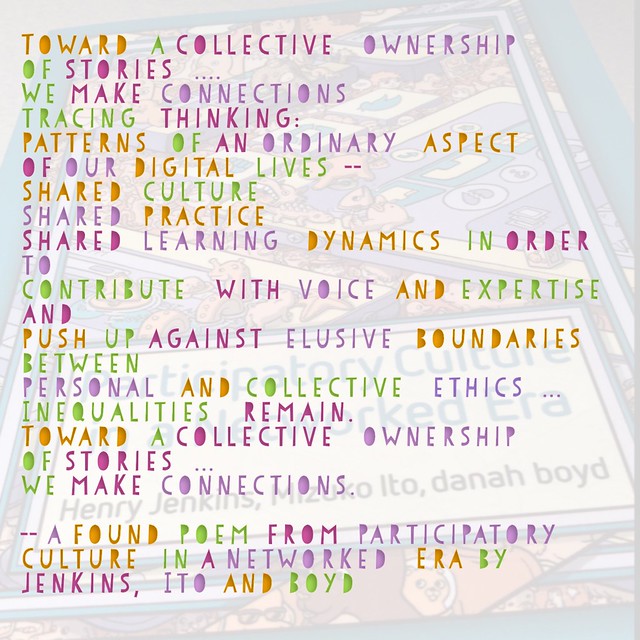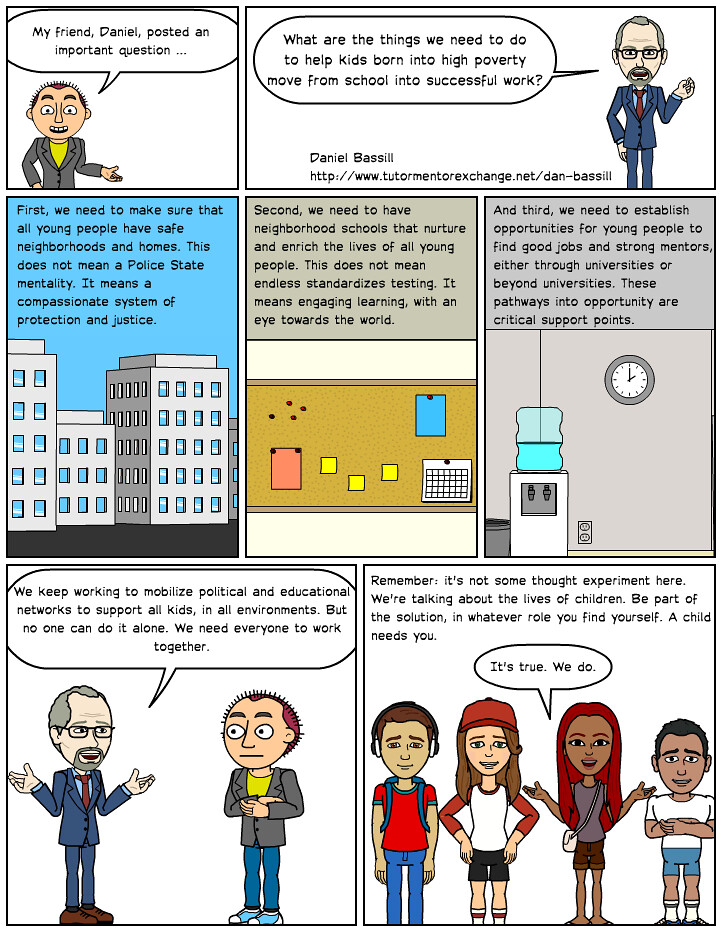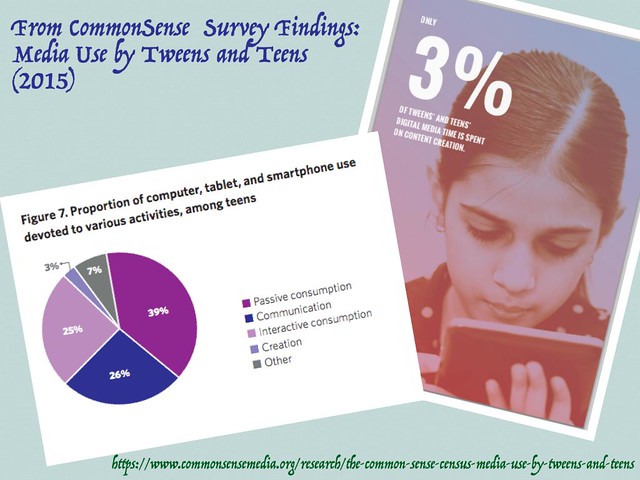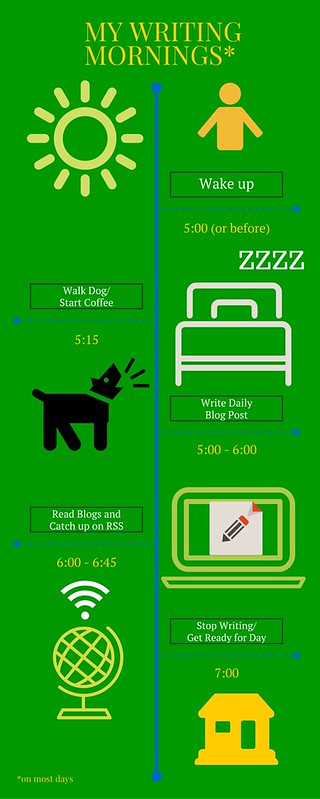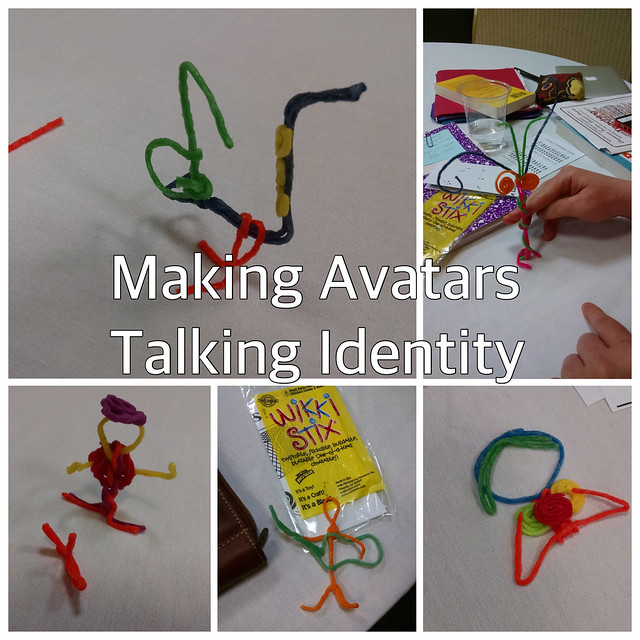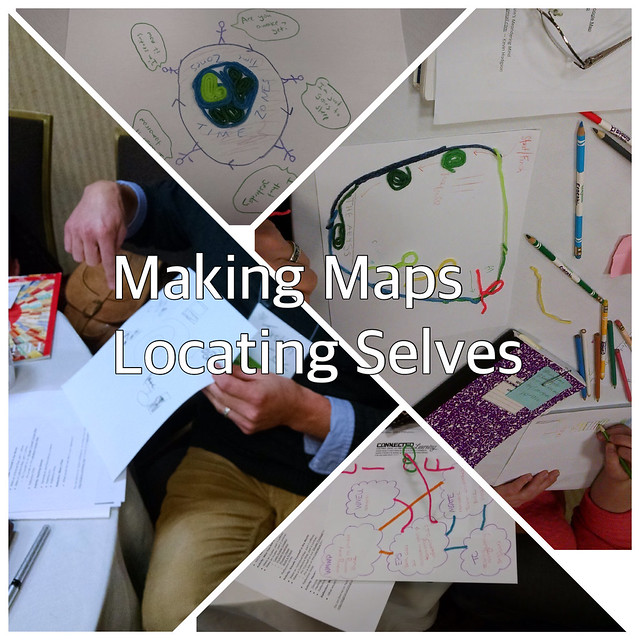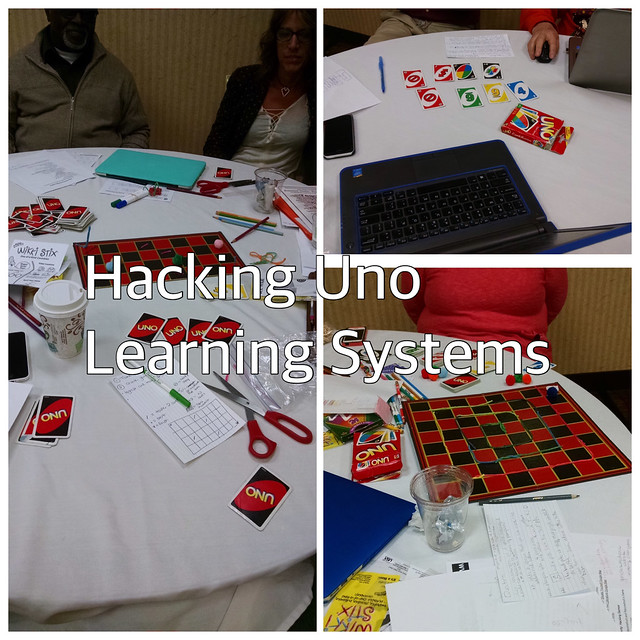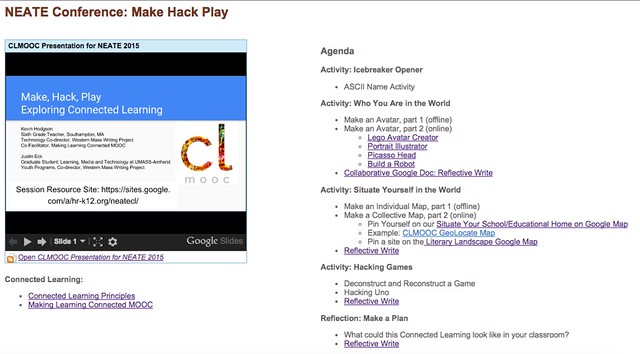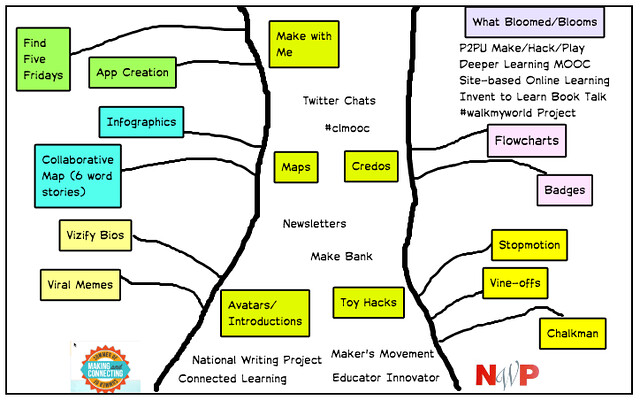
(Year One Emergence Ideas: CLMOOC)
The concept of “emergent ideas” has been on my mind this week through a few different lenses.
First, I am planning out a three-hour Make Hack Play session for the New England Association of Teachers of English (NEATE) Conference next weekend, and the ethos of Connected Learning and the Making Learning Connected Massive Open Online Collaboration is driving my planning of the session. I hope to get teachers making things in a playful environment while also grounding the fun in Connected Learning ideas.
As I am pulling together an overview of the CLMOOC, and how one plans for the unexpected, the “emergent” projects that came out of left field and took on lives of their own, with little or only somewhat, guidance from the CLMOOC facilitators remains some of the more magical memories of that project.
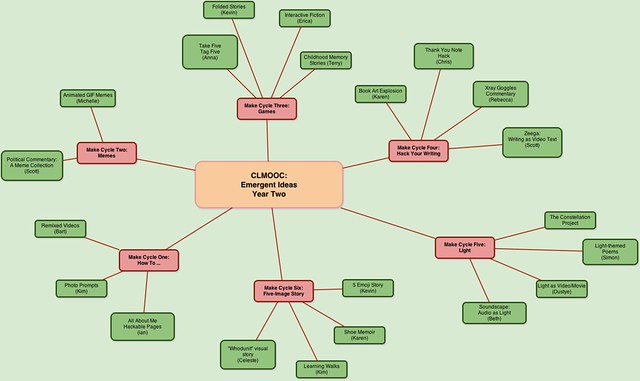
(Year Two Emergent Ideas: CLMOOC)
Then, in a podcast interview this week with Chris Guest about the upcoming Digital Writing Month, my co-facilitators Maha Bali and Sarah Honeychurch and I were talking about how we are working on a plan for November’s monthlong exploration of digital writing, but that we most fondly remember “emergent” projects and collaborations from other open learning spaces (such as Rhizomatic Learning) that formed the anchor of those experiences, for us, as participants.
Our hope is that all sorts of emergent ideas bloom in Digital Writing Month, but how do you plan for that? First of all, you can’t. If an idea is open, then open is the idea, and facilitators have to keep the hands off the wheel as much as possible.
But facilitators can establish fertile ground for ideas to take root, and facilitators can “notice” these ideas and gently move them along. Facilitators can validate what might seem like a crazy idea and see it can work. Facilitators can become the conduits for collaboration.
Here’s an example already with Digital Writing Month, and the month hasn’t even begun (it takes place in November): the Storyjumpers Project.
It began with a tweet from Bruno, who was thinking of signing up for Digital Writing Month, and then after doing so, he wondered out loud, on Twitter, if a collaborative story, moving from blog to blog, might be possible. That was all we needed, and soon, we had an open Google Doc up and running, and now 18 people (including a youth writing group in Vermont) from all over the world (literally) have signed up to “pass the story” throughout Digital Writing Month, from blog to blog.

To be honest, we don’t know how it will unfold, and whether there will be chaos or beauty, or something smack dab in the middle. But that won’t stop us from trying this kind of collaborative writing adventure. There’s a story to write, and we’re going to write it.
Finally, I look at my own classroom of sixth graders, and wonder how I can best lay the groundwork this year for emergent ideas in that space, too. The difficulty is that waiting for the unexpected in a traditional school experience is often at odds with curriculum mandates. Learn this. Learn that. Teach this. Teach that. I struggle with this tension, and continue to ponder how possibly the “Genius Hour/20 Percent” concept of open student inquiry might prop the door open to emergent thinking in a more sustained way. I’m getting there … I’m moving there …
Meanwhile, Maha and Sarah and I wonder what will emerge next in Digital Writing Month. Who knows? I’m a facilitator and I have no idea. And I am fine with that. Expect the unexpected, and learn more about the world. That’s how learning takes root and flourishes.
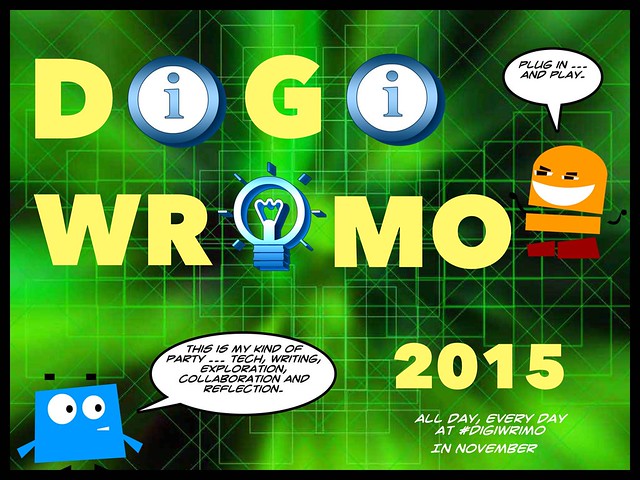
Want to know more about Digital Writing Month?
Peace (in the unknown),
Kevin

